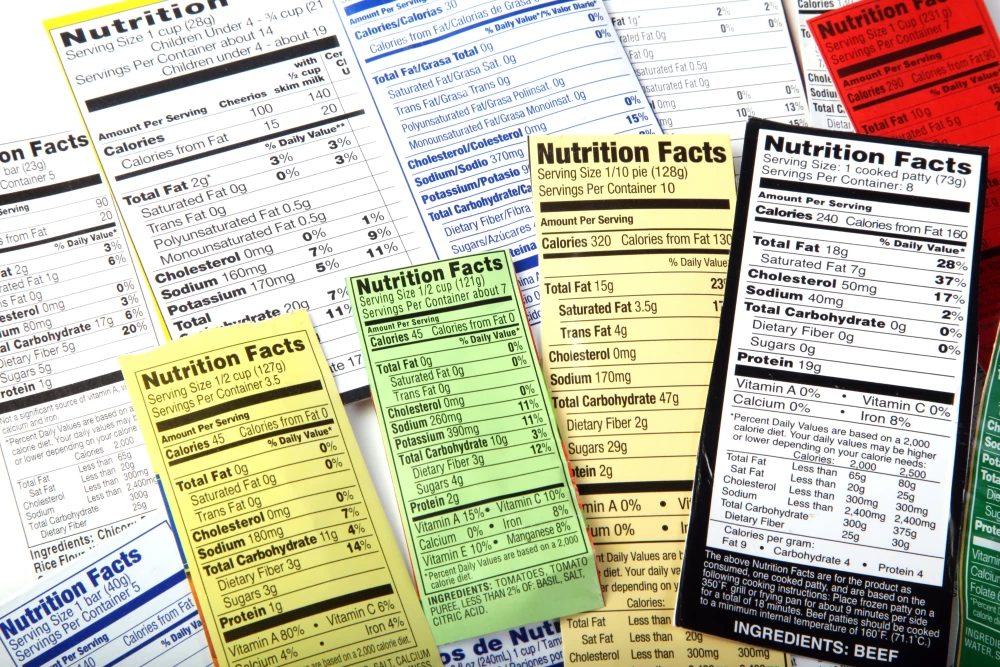
- 21st March 2023
Table of Contents
Fatty Liver Diet
When shopping for a fatty liver diet, it is important to read labels carefully and make healthy choices. Look for foods that are low in saturated fat, trans fat, and cholesterol. Choose lean proteins like chicken or fish instead of red meat. Opt for whole grains like brown rice or quinoa instead of refined grains like white bread or pasta. It is also important to watch out for added sugars and salt. Many packaged foods contain hidden sugars that can contribute to weight gain and liver damage. Similarly, high levels of salt can lead to water retention and increased blood pressure, which can be harmful to the liver. In addition to avoiding unhealthy ingredients, try incorporating more fresh fruits and vegetables into your diet. These foods are rich in vitamins, minerals, and antioxidants that help support liver health. Aim for a variety of colors in your produce choices to ensure you are getting a range of nutrients. By making smart choices at the grocery store, you can create a healthy fatty liver diet that supports overall wellness.
Understanding Labels
One of the most important aspects of shopping for a fatty liver diet is understanding food labels. Reading labels can help you make healthy choices that will promote liver health and prevent further damage. When reading labels, look for foods that are low in saturated fat, trans fat, and sugar. It is also important to pay attention to serving sizes on food labels. Many products may appear to be healthy at first glance, but if you look closely at the serving size, you may realize that it contains more calories or sugar than you thought. Paying attention to serving sizes can help you control your portion sizes and make healthier choices. Finally, when reading food labels, be sure to check the ingredient list. Ingredients are listed in order of quantity from highest to lowest, so if a product has a high amount of added sugars or unhealthy fats listed first on the ingredient list, it may not be the best choice for a fatty liver diet. By taking the time to understand food labels and making informed choices based on them, you can improve your liver health and overall wellbeing.
Calories and Macronutrients
When it comes to managing fatty liver disease, monitoring your calorie intake and macronutrient consumption is crucial. Reading food labels can help you make informed choices when shopping for groceries. Start by checking the serving size and total calories per serving. This information will help you monitor your daily calorie intake and ensure that you are not exceeding your recommended daily limit. In addition to calories, it's important to pay attention to the macronutrients in the foods you eat. These include carbohydrates, protein, and fat. A healthy fatty liver diet should include a balance of all three macronutrients, with an emphasis on consuming more lean protein sources like chicken breast or fish as well as fiber-rich carbohydrates such as fruits and vegetables. One way to keep track of your macronutrient consumption is by using a food tracking app or journaling your meals. This can help you identify any areas where adjustments may be needed in order to meet your dietary goals. By being mindful of both calories and macronutrients when making grocery purchases, you'll be setting yourself up for success on your journey towards improved liver health.
Reading Ingredients List

When shopping for a fatty liver diet, it's important to read the ingredients list on food labels. This will help you determine if the product contains any ingredients that can negatively impact your liver health. Look out for ingredients such as high fructose corn syrup, trans fats, and excessive amounts of saturated fat. These ingredients have been linked to an increased risk of fatty liver disease. Reading the ingredient list is also crucial in identifying hidden sources of sugar in processed foods. Sugar can be listed under different names such as dextrose, glucose, maltodextrin, or sucrose. By knowing these names and checking the ingredient list thoroughly, you can avoid consuming excess sugar which contributes to liver damage. Additionally, reading ingredient lists helps you identify any potential allergens or intolerances that may cause inflammation and further damage your liver health. Learning how to read labels is an essential skill for anyone looking to improve their overall health and well-being through dietary choices.
Artificial Additives & Preservatives
When shopping for a fatty liver diet, it's important to pay attention to the ingredients in the foods you're buying. Artificial additives and preservatives are commonly found in processed foods and can be harmful to your liver health. These additives are used to extend the shelf life of food products, enhance their flavor and appearance or make them more appealing. However, consuming these artificial chemicals may cause inflammation in the liver, which can lead to further damage. To avoid these harmful additives, look for whole foods that have not been heavily processed. Fresh fruits and vegetables are excellent choices as they contain natural vitamins and minerals that support healthy liver function. When reading labels on packaged foods, avoid those with long ingredient lists or names you can't pronounce. In addition, choose items labeled as "organic" or "non-GMO," as these products generally contain fewer artificial additives than their conventional counterparts. By making conscious choices when grocery shopping and avoiding artificial additives and preservatives whenever possible, you can help support your overall liver health while still enjoying delicious meals.
Shopping Strategies: Bulk & Fresh Items
When shopping for a fatty liver diet, it's important to have an effective shopping strategy in place. One such strategy is to purchase items in bulk. Bulk items are often more cost-effective and can last longer, reducing the number of trips you need to make to the store. Items that are great to purchase in bulk include grains like brown rice or quinoa, nuts and seeds like almonds, walnuts or chia seeds, and legumes like chickpeas or lentils. Another key shopping strategy for a fatty liver diet is selecting fresh items. Fresh fruits and vegetables should take up a large portion of your grocery cart as they contain essential vitamins and minerals that can help improve liver function. When choosing fresh produce, look for vibrant colors as these indicate high nutrient content. Additionally, try purchasing produce that's currently in season as it will likely be less expensive and taste better than out-of-season options. By incorporating these shopping strategies into your routine when buying food for your fatty liver diet, you can save money while making healthy choices that will support improved liver function over time.
Finding Balance & Moderation
When it comes to shopping for a fatty liver diet, finding balance and moderation is key. It's important to read labels carefully and choose foods that are low in saturated and trans fats, as well as added sugars. However, it's also important to remember that not all fats are bad - it's about choosing the right types of fats in moderate amounts. In addition to paying attention to fat content, it's important to focus on overall nutritional value. Look for foods that are high in fiber, vitamins, and minerals while being low in calories. This will help you feel full and satisfied while still supporting your liver health. Finally, don't forget about portion control. Even healthy foods can be problematic if you eat too much of them. Use measuring cups or a food scale to ensure that you're eating appropriate serving sizes, and try not to go back for seconds unless you're truly hungry. By finding balance and moderation in your shopping habits and portion sizes, you'll be able to support your liver health without feeling deprived or overwhelmed.
Conclusion
In conclusion, shopping for a fatty liver diet can seem overwhelming at first, but with the right knowledge and tools, it can be an easy and enjoyable experience. Reading labels is crucial when making healthy choices. It is important to avoid foods high in saturated and trans fats, added sugars, and sodium. When choosing meats, opt for lean cuts such as chicken or turkey breast, fish or seafood. Vegetables should make up most of your plate while fruits can be eaten in moderation due to their natural sugar content. Look for whole grains like brown rice or quinoa instead of refined grains like white bread or pasta. Remember that small changes lead to big results over time. Eating a balanced diet with regular exercise can improve not only your liver health but also your overall well-being. Don't give up if you slip-up once in a while - just get back on track and keep moving forward towards better health!
